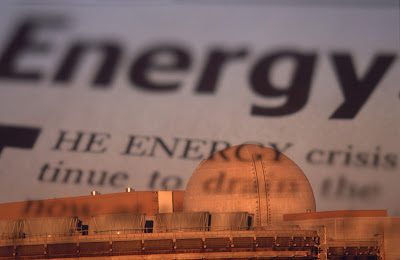A holistic approach to building
Earlier this year CIBSE released the first update to its foremost publication on environmental design, Guide A, in nearly a decade. We spoke to the Chair of the Guide A steering Committee Derrick Braham, to find out the whole story behind the changes to the Guide.
What is different about the new guide?
First and foremost, the new Guide A is a holistic and comprehensive update of the old. It’s taken nine years of hard work to achieve,
but as our flagship guide on environmental design, it’s imperative that care is
taken to ensure all the changes of the past decade have been taken into
account. And a lot has changed; from new EU regulations to altered Government
targets, new research and new techniques, and these all must be taken into
account in each chapter to ensure that there is consistency in the design
process.
There has also been a second driver behind the
process of updating Guide A: The building services industry’s response to
climate change. This is an aim that is baked into the Guide rather than
something that can be tacked on, but it manifests itself most clearly in the
inclusion of the new Chapter 0, which aims to set out a route map for
environmentally conscious design.
Building services engineers are working in a
profession for which climate change will be tremendously important in the long
run, both in terms of how they affect it, and how it affects them. Research by
the Sustainable Energy Association showed that inefficient buildings are
costing the UK £12bn a year in wasted heat, not to mention the amount of
greenhouse gases emitted to replace that excess. It is clear therefore that
action is needed to ensure that new buildings are constructed with standards in
mind to cut that waste, and who better to lead the charge than building
services engineers?
What were the main driving forces behind the changes to the guide?
If the costs to the economy, client and environment weren't enough of a case, there’s the future to consider. A changing climate
means changing weather conditions, which may have a huge impact on the future
design of buildings, as well as the effectiveness of those already in place.
Designers, contractors and especially facilities managers of the future will be
left trying to deal with a situation that is very different from our own, in
which the current rule book is torn up by greater extremes in temperature,
leaving current and planned structures ill-equipped to deal with the new
conditions.
There are few professions that have such a
grasp on the future of climate change as the engineer. Politicians often have
competing agendas, and can only guarantee any particular direction for a
maximum of five years – building services engineers in one form or another are
with a building for its entire life span. It was with this in mind that we
created Chapter 0. Using this chapter and their professional judgement, the
engineer has a way of assessing the entire process of designing a building
according to the original aims, as well as calculating how to achieve those
aims.
By using this method to design, construct and
maintain a building, the engineer is taking responsibility for the impact his
profession has on the environment and working to effect positive change. This
has been made possible by one of the biggest jobs associated with the updated
Guide: Updating the enormous amount of data that goes into producing a leading
guide such as this. This includes updating figures from the parameters of human
hearing, to mean geographical temperatures throughout the seasons, which all
help to better define comfort in the context of environmental design.
What does it mean when you say the update is 'holistic?'
It’s important to remember that comfort is just
as much a part of the design process as efficiency, something that can make a
failure of even the most ecologically sound building. Designing a building is a
fundamentally people-focussed activity, something which an engineer can easily
lose sight of under pressure to deliver ever greater efficiency. Unfortunately,
the systems in a building that are most often associated with comfort, such as
the air conditioning, heating and ventilation, are also often the biggest
culprits when it comes to reducing its efficiency.
So when we say that Guide A is a holistic
approach to environmental design, we really mean it. When considering the
consequences of climate change, Guide A makes an effort to ensure that the
building is both efficient and liveable; not a harsh and Spartan slave to
efficiency, or a luxurious waste of electricity. This is achieved by providing methods
of calculation such as fabric performance, heating and ventilation system
sizing and methods for thermal comfort evaluation and energy demand, to ensure
that the engineer has as many tools as possible at their disposal to make the
right decisions.
The upgrades to Guide A serve to make it the
most complete Guide available on environmental design, but they also add a
considerable amount of data that will future-proof the Guide for decisions made
today that will be felt tomorrow. As a result, it will allow engineers to step
up to the plate and really make a difference in design that limits the effects
of climate change.


.png)


Comments
Post a Comment